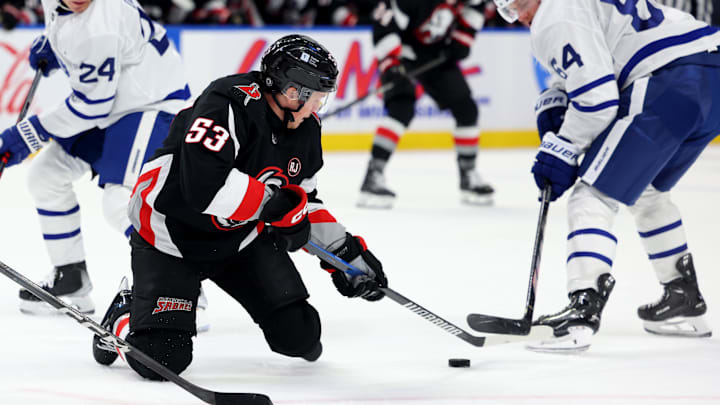The trade would also free up more cap space for more consistent talent
Trading away Jeff Skinner, even if it means retaining a portion of his salary over the next three seasons, nonetheless opens cap space. Although Skinner has performed well since 2021-22, he wasn’t the most consistent player in the lineup during his age-31 season, finishing with 46 points and 24 goals.
Not a bad number when you consider Alex Tuch and Rasmus Dahlin led the team in points with 59 apiece, but it’s also worth noting that Skinner finished behind Casey Mittelstadt in points. That also wouldn’t have been so bad since Mittelstadt parlayed his breakout campaign in 2022-23 into something more this season, but there’s only one caveat: The Sabres traded Mittelstadt following his 62nd game.
Sure, the entire team was inconsistent, but Skinner, despite also finishing third on the team in goals, not only dropped off, but his age and larger contract made this less forgivable than others like Tage Thompson, Alex Tuch, and Dylan Cozens. Trading Skinner and handing a portion of his salary elsewhere gives Kevyn Adams more spending money to add a more consistent forward.
And who knows, maybe trading Skinner could also lead to an elite talent coming to…or coming back…to Buffalo? Hey, the Sabres already reunited with their coach, so the latter isn’t out of the question. As for the top-line quip from earlier, this would be a situation where a younger, more consistent talent would come in and take that spot.
Or, if this scenario occurred and Adams brought in someone better suited for the second line, someone like Quinn or Peterka would factor in on the first, and the newcomer would play on the second.
